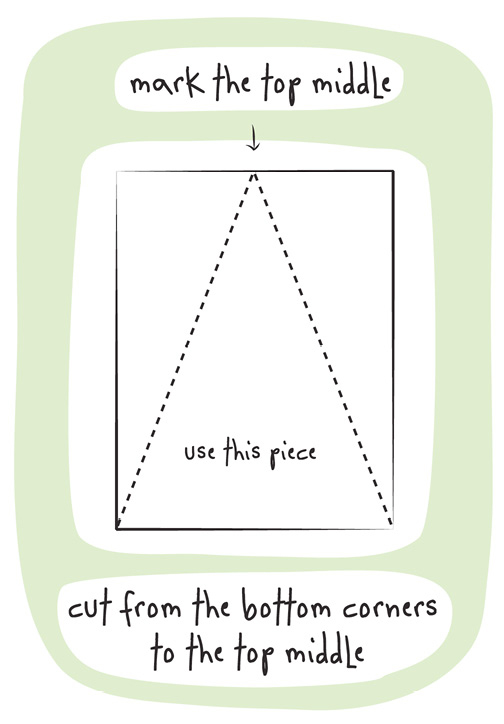Celebration Bunting
Who doesn’t love bunting? This project is super versatile—make as instructed or change up the colors and greeting to suit the holiday or event.
You will need:
* Power drill with 3⁄16" bit
* 14 corks
* Regular scissors
* 9 sheets of 81⁄2" × 11" cardstock
* Assorted washi tape
* Standard hole punch
* Paintbrush
* Acrylic paint, stencils, markers, or printed fonts, as desired
* 1" wide ribbon
- Drill holes in the corks lengthwise. Remove crumbs from the holes.
- Cut the cardstock into triangles, as shown in the illustration.
- Apply washi tape, as desired, to the bottom third of each triangle.
- Punch 2 holes in the top of each triangle.
- Paint on letters to spell out “celebrate.” You could also use stencils, markers, or printed fonts from your computer.
- Thread 3 corks onto the ribbon to start, and then alternate 1 triangle and 1 cork until you reach the last triangle. Finish with 3 more corks.
- Tie knots in the ends of the ribbon to secure. Trim the ribbon so a few inches remain at the end.
OPTIONS!
If you are a quilter, you can use a dull rotary cutter blade, your quilting ruler, and a cutting mat to cut several sheets of cardstock at a time! Another option would be to use decorative scissors with a deckle, pinking, or scalloped edge. If you have all these craft supplies, use them!
Mastering Wine Lingo
When wine lovers get excited about a new wine find, they want to share the experience. The only trouble is that words are often so inadequate. Talking about wine has become intimidating, since many terms seem mysterious and pretentious. Here are some public terms that every wine lover should be familiar with.
- Dry—It’s the opposite of sweet. When all the sugar in the grape juice has been converted to alcohol and carbon dioxide, the wine is said to be bone dry. There is a continuum, however, between really sweet and really dry. If enough residual sugar remains to give the wine a slight sweetness, the wine is off-dry.
- Balance—None of the wine’s components is out of whack. The acid, alcohol, fruit, and tannins all work together so that one doesn’t stand apart from the rest.
- Finish—A wine’s aftertaste, or the flavor or aroma that lingers after you’ve swallowed the wine, is referred to as its finish. If it has one, it’s considered a good thing and the longer the better. A “long finish” is a real compliment.
- Complex—Layers and nuances of flavor make a wine complex. A complex wine will continue to reveal itself as you sip it. This multidimensional quality is often achieved with aging. A complex wine is also said to have depth.
- Crisp—A wine with good acidity and no excessive sweetness is crisp. Think of an apple. The wine is relatively high in acidity, but the acidity doesn’t overwhelm the other components.
In general some of the aromas you’ll be able to discern from white wines are melon, apple, pineapple, pear, citrus, vanilla, caramel, flowers, herbs, grass, minerals, olives, and butterscotch.
Some flavors and aromas from red wines are berries, cedar, currants, plums, cherries, blackberries, flowers, earth, wood, smoke, chocolate, tobacco, leather, and coffee.


